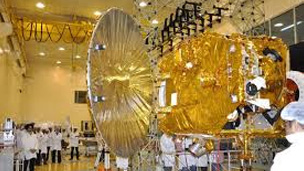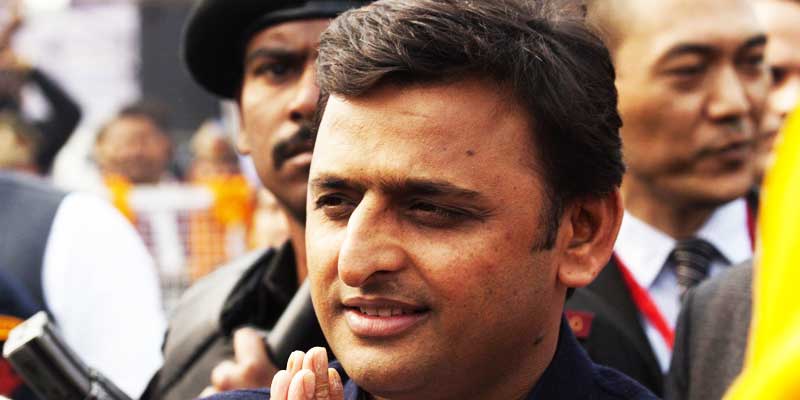India’s first Mars orbiter on Tuesday successfully began an ardous 400 million km long journey to Mars, making it the first Asian country and the fourth in the world to undertake a mission to the red planet
India’s first Mars orbiter on Tuesday successfully began an ardous 400 million km long journey to Mars, making it the first Asian country and the fourth in the world to undertake a mission to the red planet in the hope of finding methane and minerals.
India’s Rs.450 crore (about $72.9 million) Mars orbiter was successfully placed in orbit by an Indian rocket in what scientists said was a flawless launch.
Exactly at 2.38 p.m., the Indian-made rocket – Polar Satellite Launch Vehicle-C25 (PSLV-C25) standing around 44 metres tall and weighing around 320 tonnes – rose from its launching pad slowly, and then gathered speed as it zoomed into the skies on a plume of fiery orange flames.
The expendable rocket, costing around Rs.110 crore had a single but important luggage, the 1,340-kg Mars orbiter costing around Rs.150 crore. Around Rs.90 crore has been spent on augmenting the ground support/tracking systems.
The orbiter now heads to the red planet that gets its red hue from the iron in its soil. Named after the ancient Roman god of war, Mars is the fourth planet from the Sun and the planet closest to Earth. NASA says Mars is about one-sixth the size of Earth.
Its scientific mission will be to explore the Mars surface features, morphology, or the study of organisms, mineralogy, the study of minerals, and Martian atmosphere by all Indian-made scientific instruments.
India began its space journey way back in 1975 with the launch of Aryabhatta, using a Russian rocket and, till date, it has accomplished over 100 space missions.
In 2008, India expanded its space explorations with its maiden Moon mission – Chandrayaan-1. The mission led to the discovery of water on the Moon. The country is planning another Moon mission in two years’ time.
According to Indian Space Research Organisation (ISRO) officials, the Mars orbiter will orbit the Earth till Nov 30 and then its motors will be fired to push it towards the red planet.
For nearly 300 days the motor will be off while the spacecraft floats through the inky void towards Mars. When the spacecraft nears Mars, the motors will be restarted and fired again to carry out maneuvers to put it in Martian orbit around September 2014.
Following that, the on-board instruments would carry out their jobs.
The Mars mission blasted off from the first launch pad at the Satish Dhawan Space Centre here, around 80 km from Chennai.
At around 44 minutes into the flight, PSLV-C25 spat out the Mars orbiter.
On the successful ejection, scientists at the mission control centre were visibly relieved and started clapping happily while the tracking systems began their work.
Minutes after its launch, Prime Minister Manmohan Singh in a tweet congratulated ISRO scientists for “successful initiation of Mars Mission and wishes for its successful future”.
President Pranab Mukherjee described it as “a landmark in our space programme”.
“Now it will be complex mission to take the Mars orbiter from the Earth’s orbit to Mars orbit,” K. Radhakrishnan, ISRO chairman, said post launch.
According to him, in September 2014 the orbiter will be around Mars and it will then be placed in Mars orbit.
The entire launch duration was full of suspense. Unlike the normal PSLV missions that ended around 18 minutes into the flight, the Mars Orbiter Mission took 44 minutes.
The suspense was heightened as the rocket had a long coasting period of around 25 minutes between the third stage/engine burn-out and the ignition of the fourth and final stage.
As missing the launch would have set back the mission at least by two more years, ISRO officials did not leave out anything to chance, including the weather forecast.
“As the launch was during northeast monsoon season, we enhanced our weather/cyclone forecasting techniques to 10 days. The preparatory work for the Mars mission while dismantling of the GSLV (geosynchronous satellite launch vehicle) rocket after the mission was aborted this year posed a challenge for us,” M.Y.S. Prasad, director, Satish Dhawan Space Centre and chairman, Launch Authorisation Board, told IANS.
U.R.Rao, a former Indian Space Research Organisation (ISRO) head, said the country can afford the spend.
“India spends around Rs.5,000 crore on Diwali purchases and Rs.450 crore to reach Mars is affordable,” he said.
The objectives of ISRO’s Mars mission are two fold – technological and scientific.
The technological objectives include design and realisation of Mars orbiter with a capability to survive and perform Earth-bound manoeuvres, cruise phase of 300 days, Mars orbit insertion/capture, and on-orbit phase around Mars.
It will also enable deep space communication, navigation, mission planning and management and incorporate autonomous features to handle contingency situations.
-IANS





